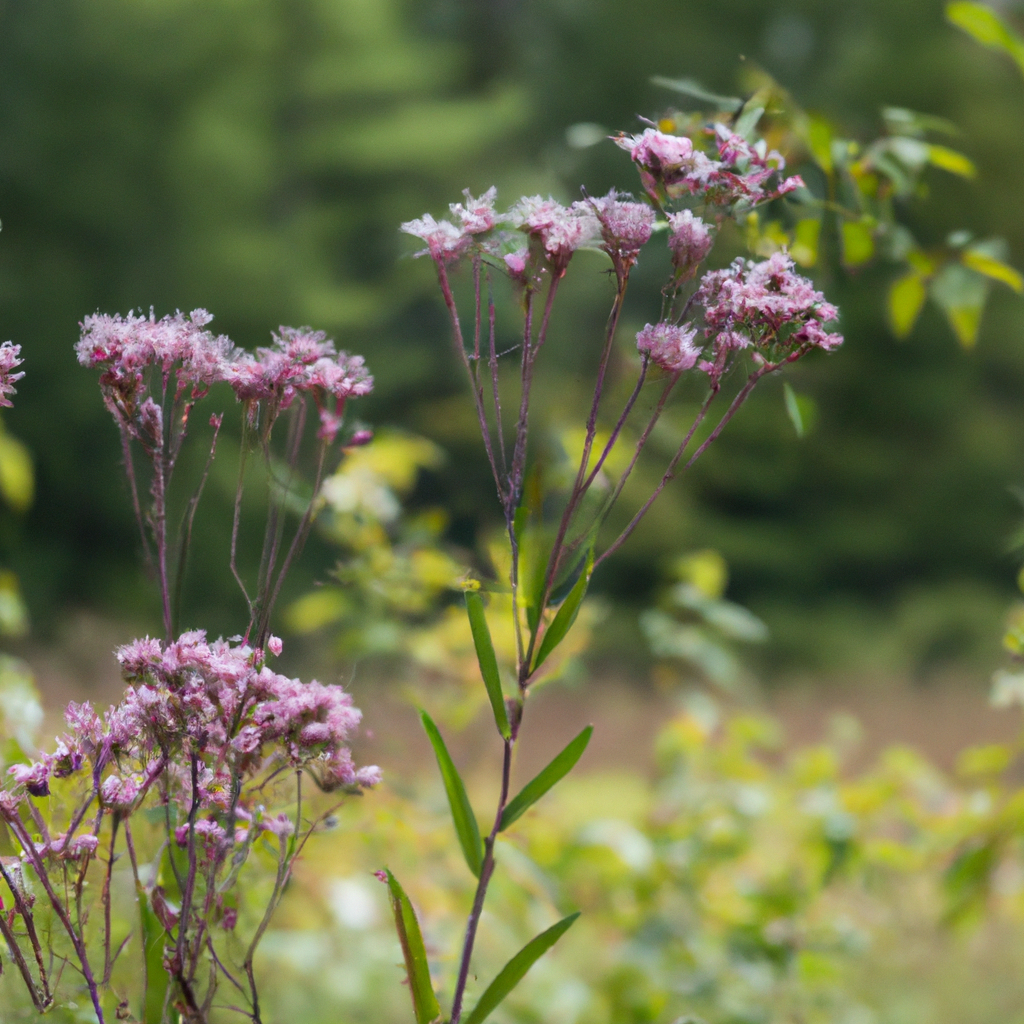Biological Name:
Vernonia noveboracensis
Natural Habitat:
New-York-Ironweed: This plant is native to eastern North America, and can be found in moist meadows, along streams, and in other damp areas.
Description:
New-York-ironweed is a type of flowering plant that is commonly found in fields and other grassy areas. It is a member of the Asteraceae family which also includes plants such as daisies and sunflowers. New-York-ironweed is an annual or perennial plant that produces small purple or white flowers and clusters of seeds. The plant is often used as a cover crop to improve soil health and suppress weeds. It is also known for its ability to tolerate a wide range of growing conditions including wet or dry soils. In some areas New-York-ironweed is considered a weed because of its ability to invade cultivated areas and cause allergies and other health problems.
Frequently Asked Questions (FAQs)
Q: Is New York ironweed invasive?
A: New York ironweed (Vernonia noveboracensis) can self-sow, but this native wildflower is not considered invasive. In fact, preservationists often suggest it as a substitute for more aggressive plants. Most sources say “iron”” refers to the extremely sturdy stems.”
Source
Q: Is ironweed good for butterflies?
A: A rich source of natural nectar, the plant is extremely attractive to butterflies. Vernonia (Ironweed) is big genus of New World wildflowers, with most species native to North America. Members of the Aster family, they are important late season sources of nectar for butterflies.
Source
Q: Is New York ironweed poisonous?
A: Ironweed is not considered a toxic plant, but it can cause allergies. Skin irritation is a common reaction from contact with the plant, especially for those who regularly have compositae allergies.
Source
Q: What can I plant with New York ironweed?
A: Grow New York ironweed in full sun to filtered shade. It grows well in the flower border or native meadow garden with Andropogon virginicus, Helianthus angustifolius, Conoclinium coelestinum, Symphyotrichum novae-angliae, Liatris spicata, and Helianthus microcephalus.
Source
Q: Should I deadhead ironweed?
A: Pruning. New York ironweed requires no pruning, but deadheading spent flowers is a good idea if you want to limit its self-seeding habit, which can cause the plant to spread invasively. At the end of the growing season, garden plants can be cut down to near ground level.
Source
Q: Is tall ironweed invasive?
A: Like many other plant species I tend to admire and write about, however, ironweed is not an invasive plant – it’s an opportunist. It takes advantage of soil and management conditions that favor it, but doesn’t just spread aggressively across pastures.
Source
Q: Is New York ironweed native?
A: New York ironweed is a native plant of the eastern United States, and to southern New England. Plants that occur in New Hampshire are introduced. It is grown as a native plant in ornamental gardens, and is particularly good at attracting butterflies.
Source
Q: Is ironweed a good plant?
A: Named for its tough stem, Ironweed has excellent upright form in the garden. The intense purple bloom color stands out in the late summer landscape, attracting many butterflies and other pollinators.
Source
Q: Is ironweed good for anything?
A: Traditionally, little ironweed has been used to treat fever, malaria, arthritis, worms, gastrointestinal disorders, coughs and asthma, menstrual pain, diarrhea, blisters and boils, snakebite, psoriasis, conjunctivitis, and malaria. The herb is also considered a sedative and tranquilizer.
Source
Q: Do butterflies like ironweed?
A: A rich source of natural nectar, the plant is extremely attractive to butterflies. Vernonia (Ironweed) is big genus of New World wildflowers, with most species native to North America. Members of the Aster family, they are important late season sources of nectar for butterflies.
Source
Q: Do bees like NY ironweed?
A: This plant is perfect your pollinator garden. New York Iron Weed has both pollen and nectar for butterflies, bees, flies and beetles. You will enjoy the rich color too as well as the pollinators that are attracted.
Source
Q: Is ironweed good for bees?
A: If supporting pollinators is on your list, native Common Ironweed is a top pick. Clusters of magenta-purple flowers top the branches from mid-summer to fall and it is a pollinator magnet. In fact, the Xerces Society identified it as a special value plant for native bees.
Source
Q: Should ironweed be cut back?
A: Ironweed spreads readily through self-seeding. Limit its spread by snipping off flower heads before the seeds develop. Reduce the overall height of mature plants in late spring by cutting young stems back almost to the ground.
Source

